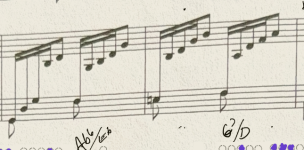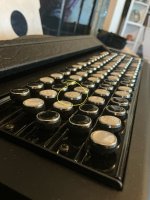stickista
Well-known member
Actually, not even free bass-specific…
I’m learning the accompaniment to Fauré’s Sicilliane on MIDI CBA, which allows me to use a sustain pedal for a nice ringing arpeggiation.
But my goal is to port to accordion when my free bass instrument arrives next month and I’m struggling to achieve anything on actual accordion that doesn’t sound as if I’m just building a big 5-not chord one note a a time.
I have to believe there must be a standard accordion technique for arpeggiation that involves something like only leaving any 2 consecutive notes depressed at any given time, sort of rolling through the arpeggio but I’m not finding useful tutorials or descriptions anywhere.
Does anyone have any pointers for overcoming the lack of decay on accordion?
(In key of g minor, 2 flats)

I’m learning the accompaniment to Fauré’s Sicilliane on MIDI CBA, which allows me to use a sustain pedal for a nice ringing arpeggiation.
But my goal is to port to accordion when my free bass instrument arrives next month and I’m struggling to achieve anything on actual accordion that doesn’t sound as if I’m just building a big 5-not chord one note a a time.
I have to believe there must be a standard accordion technique for arpeggiation that involves something like only leaving any 2 consecutive notes depressed at any given time, sort of rolling through the arpeggio but I’m not finding useful tutorials or descriptions anywhere.
Does anyone have any pointers for overcoming the lack of decay on accordion?
(In key of g minor, 2 flats)

Last edited:

